Computer Science Enlightened or What Do Flowers, Cars and Solar Cells Have in Common?
Light has many facets. If you ask a physicist he would tell you, that light has waves as well as particle properties.
In computer science we also work with the different sides of light but without being as theoretical about it as physicists. That's because light can accomplish so much: it creates energy, it can transmit information, no matter if visible or not, it's everywhere in our everyday life.
In this workshop we want to discuss the different facets of light and ask ourselves: how does that actually work?
How can light help us with parking a car? And how can you measure speed with it? How can light pass on information? And what do you need to do to maximize the efficiency of solar cells?
Since it's proven that you learn the best by doing it yourself, you do not read all that much in this workshop but much rather do stuff.
How? With Arduino micro controllers, lots of LEDs, a lot of other various parts somehow related to light and heaps of fun!
Station 0 - First Project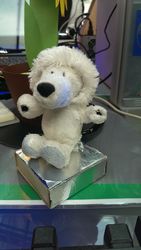
Certainly many of you already heard the term micro controller. For many these are small, mysterious chips which have even more mysterious functions and are programmed in special laboratories by genius engineers.
Even if there is a lot of high-tech inside. You do not need 5 year hard studies or a graduation in Hogwarts to do some great works with it!
At the beginning, you learn the basic concepts of programming from A to Z. Furthermore you learn to let a LED blink or switch on and off with a push button while knowledge from physics or computer science are not required.
After your first project, you are ready for the next challenges. Get ready for various opportunities: parking assist sensor, speed measurement, digital thermometer or a sunflower which can adjust to the sun!
Station 1 - Sun Flower
For the sun flower sunlight is essential for survival. The more sun, the better. Therefor she faces the sun, following its course by slowly turning to the brightest point of the horizon. Solar cells move just like the sun flower to get as much light as possible for as much power as possible.
But how can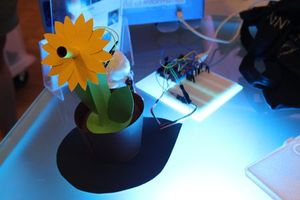 solar cells and sun flowers adjust? How do they know in which direction they need to turn? How can they measure the light intensity at all?
solar cells and sun flowers adjust? How do they know in which direction they need to turn? How can they measure the light intensity at all?
In this project, a brightness sensor and a servomotor will be combined, creating a sun flower that follows a flashlight and thus enabling us to answer those questions.
Should your decorative plant at home lose its ability to turn, you are able to help it out bionically after this project. ^^
Station 2 - Parking Assistant System
Most of you that attended driving school know about the nightmare that was reverse parking!
Well, lucky for us, that more and more cars come with parking assistant systems that warn us about imminent crashes with their annoying beeps. 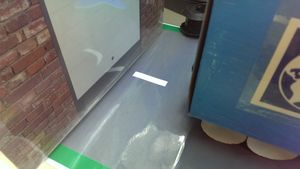
But how do those systems work? How does the car know its distance to objects? And how does that distance get turned into a beep?
The answer is invisible: infrared light! In this project you will build your own parking assistant system with an infrared sensor and a buzzer (a unit that emits sound).
Let’s see if you can park our InfoSphere-Test-Truck in reverse at its unloading station :)
Station 3 - Speed Measurement
In sports the time has to be measured accurately down to a thousandth second (e.g. during a 100-meter sprint). During a car race the picture needs to be taken at the right moment to be able to determine the winner. For that light barriers are used. You even encounter those in your everyday life. When entering a mall, lots of wondrous things happen. Doors open magically, an escalator starts up before stepping on it and when you jump into a closing elevator, the doors open again so that you do not get stuck between them.
But how do those devices know when to react? How does everything work automatically and why can't you see any switches or something alike?
All of those devices use invisible light: infrared light. At this station infrared diodes and infrared photodiodes are used to measure speed and time with the help of two light barriers.
Station 4 - Color Thermometer
Thermometers come in quite handy, you use them to prevent burning yourself or to determine if a t-shirt is enough to go outside or if you should rather pack a pullover.
However, most of the time it is not that easy to figure out what exactly this statement in °C now means in that particular situation. It would be so much more helpful to be able to determine with one glance if something is hot or cold. After all, we connect blue with cold and red with hot intuitively. Modern LED- taps, for example, exploit this connection.
We chose to use RGB-LEDs. Those can flash red, blue and in a lot more fancy colors.
In this project you will learn how to get every color using only the three primary colors without getting your hands dirty and all of that is achieved with one LED!
Moreover you will learn how to measure the temperature with an electronic unit enabling you to build the electronics from your house own water tap yourself.
This module was created late 2013 in the context of a cooperation between the FabLab at the RWTH Aachen and the Bundesministerium für Bildung und Forschung (BMBF). In addition to this workshop for students from classes 8 to 11, a teacher training should be created that enables teachers to introduce similar projects at their school (both in computer science class and working groups).
There exists a 3 hour short version of this module, designed specifically for students that have experience in programming in Java or C.
This module is currently being translated to English so that it can be offered to international classes in the future.
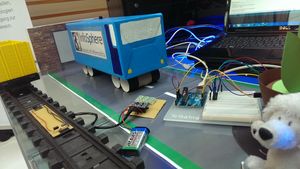
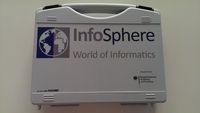
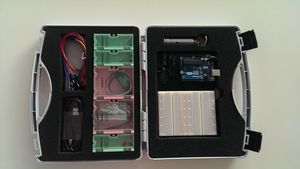
Attention: This module's material is available in English. If there is enough preparation time, a conduction in English will be possible.


















